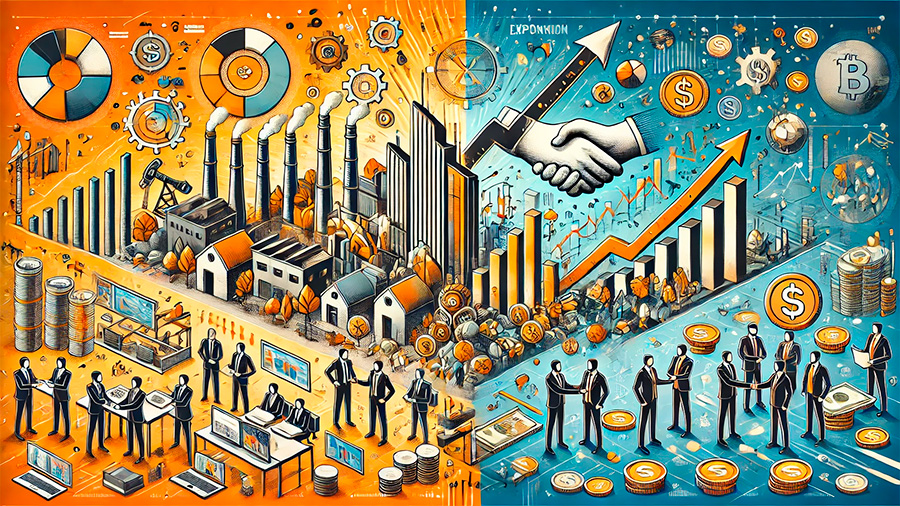The Federal Reserve (Fed) has a powerful tool at its disposal to influence economic growth: interest rate adjustments. When the Fed lowers interest rates, it creates an environment that encourages borrowing and spending, which in turn stimulates economic activity. This approach, known as loose or expansionary monetary policy, is often used during periods of economic slowdown or recession to help jumpstart growth. In this article, we will explore how lower Fed rates stimulate economic growth by influencing borrowing costs, consumer spending, business investment, and overall market confidence.
The Mechanism Behind Lower Fed Rates
The Fed controls the federal funds rate, which is the interest rate at which banks lend money to each other overnight. This rate serves as a benchmark for other interest rates, including those on mortgages, car loans, personal loans, and business loans. When the Fed lowers the federal funds rate, borrowing costs decrease for consumers and businesses, making loans more affordable. This reduction in interest rates has a ripple effect across the economy, encouraging spending, investment, and lending.
Cheaper Borrowing Costs for Consumers
When interest rates are low, consumers benefit from cheaper borrowing costs. This makes it easier for individuals to take out loans to finance large purchases such as homes, cars, or home renovations. Lower rates also reduce the interest paid on existing variable-rate debt, such as credit cards or adjustable-rate mortgages, which frees up more disposable income for spending on goods and services.
For example, when mortgage rates are low, more people can afford to buy homes or refinance their existing mortgages at lower rates, which reduces monthly payments. This increased activity in the housing market not only helps boost the real estate sector but also has positive spillover effects on related industries, such as construction, home improvement, and retail.
Increased Consumer Spending
Lower interest rates directly encourage consumer spending, which is a critical driver of economic growth. With reduced borrowing costs, consumers are more likely to finance big-ticket purchases like cars, furniture, or electronics. Additionally, lower interest rates on savings accounts can encourage consumers to spend rather than save, as the returns on saving become less attractive.
Consumer spending accounts for roughly 70% of U.S. economic activity, making it a key component of economic growth. When consumers feel confident that they can borrow affordably and manage their debt, they are more likely to increase their spending, which supports businesses and helps drive demand for goods and services. This increased demand often leads to higher production levels and more job creation, further fueling the economy.

Boosting Business Investment and Expansion
Just as lower rates make borrowing cheaper for consumers, they also make it more affordable for businesses to take out loans. This is particularly important for companies looking to invest in growth opportunities, such as expanding operations, purchasing new equipment, or hiring additional employees. When businesses have access to cheaper credit, they are more likely to invest in capital projects that can enhance productivity and drive long-term growth.
Lower Interest Rates Encourage Business Loans
When interest rates are low, businesses are more likely to take out loans for expansion, research and development, or even mergers and acquisitions. These investments contribute to economic growth by increasing the capacity of businesses to produce goods and services, create jobs, and innovate. For small and medium-sized businesses, access to affordable loans can be the difference between stagnation and growth, as these businesses often rely on credit to finance their day-to-day operations and expansion plans.
For example, a manufacturing company might decide to take out a loan to build a new production facility or upgrade its equipment when borrowing costs are low. This investment can lead to increased production capacity, more jobs, and higher output, all of which contribute to overall economic growth.
Increased Capital Investment and Job Creation
Lower interest rates also encourage businesses to make long-term investments in capital goods and infrastructure. Companies may choose to invest in new technologies, build additional facilities, or expand into new markets when they can finance these activities at lower costs. These investments not only drive company growth but also lead to job creation and increased economic activity.
When businesses invest in new projects or expand their operations, they often hire more workers, which boosts employment levels. As more people gain employment, they have more disposable income to spend on goods and services, which in turn further stimulates the economy. This cycle of investment, job creation, and spending helps to sustain economic growth, especially during periods of economic recovery.
The Impact on Financial Markets
Lower Fed rates also influence financial markets by making fixed-income investments, such as bonds, less attractive. As bond yields decrease due to lower interest rates, investors often seek higher returns in riskier assets, such as stocks. This shift in investment behavior can lead to stock market growth, which in turn boosts business capital and investor confidence.
Stock Market Gains and Increased Investment
Lower interest rates typically result in a lower yield on government bonds and other fixed-income securities. As these returns become less attractive, investors tend to shift their focus toward the stock market, where they may find higher potential returns. This influx of investment into stocks can drive up share prices, leading to a bullish market.
A rising stock market not only benefits investors but also helps businesses raise capital through stock offerings. Companies can use the funds raised from stock sales to invest in growth initiatives, pay down debt, or expand their operations. This increased capital flow into businesses supports further economic growth by providing the resources needed for long-term expansion and innovation.
Boosted Confidence Among Investors and Businesses
Lower interest rates also have a psychological impact on investors and businesses, boosting confidence in the economic outlook. When the Fed lowers rates, it signals that it is committed to stimulating growth and avoiding a recession. This assurance encourages investors to take on more risk and businesses to pursue growth opportunities, knowing that the Fed is actively working to support economic stability.
As investor confidence grows, financial markets often respond positively, further reinforcing the cycle of economic growth. Businesses feel more comfortable investing in expansion and hiring, while consumers are more likely to spend when they see positive signs in the stock market and broader economy.

Supporting Employment and Wage Growth
One of the most important outcomes of lower interest rates is the impact on employment and wages. As businesses expand and invest in new projects, they create jobs, which reduces unemployment and strengthens the labor market. Lower unemployment leads to increased competition for workers, which can drive wage growth as businesses strive to attract and retain talent.
Job Creation in a Low-Rate Environment
When the Fed lowers interest rates, businesses are more likely to borrow money to invest in their operations, which often results in the creation of new jobs. Whether companies are expanding their production lines, opening new locations, or investing in technology, these activities typically require more workers. As more people find employment, the overall economy benefits from increased consumer spending and demand for goods and services.
Job creation is particularly important during periods of economic downturn, as it helps to reduce unemployment and stimulate recovery. When more people are employed, they have the income to spend on housing, transportation, and other necessities, further fueling economic growth.
Wage Growth and Improved Consumer Spending Power
In a low-interest-rate environment, businesses that are growing often need to offer competitive wages to attract skilled workers. As unemployment decreases, employers face greater competition for available talent, which drives up wages. Higher wages, in turn, give consumers more purchasing power, enabling them to spend more on goods and services.
This increase in disposable income further stimulates economic growth, as consumers spend their earnings on everything from groceries and entertainment to home improvements and travel. The combination of job creation and wage growth helps to create a virtuous cycle of economic activity that sustains growth over time.
Potential Risks of Prolonged Low Rates
While lower interest rates are an effective tool for stimulating economic growth, they also carry certain risks if maintained for extended periods. One of the primary concerns is the potential for inflation, as increased demand for goods and services can drive up prices. Additionally, low rates can encourage excessive borrowing, which may lead to asset bubbles or increased debt burdens for consumers and businesses.
Inflationary Pressures
When borrowing is cheap and consumers are spending more, the demand for goods and services can outpace supply, leading to inflation. The Fed must carefully balance its interest rate policy to ensure that inflation remains in check while still promoting growth. If inflation rises too quickly, it can erode the purchasing power of consumers and reduce the effectiveness of monetary policy.
Increased Debt and Financial Instability
Low interest rates can also encourage consumers and businesses to take on more debt than they can reasonably manage. While borrowing is affordable in the short term, rising rates in the future could increase the cost of debt repayment, leading to financial strain for households and companies. Additionally, prolonged low rates may fuel speculative behavior, leading to asset bubbles in markets such as real estate or stocks.
Conclusion: The Role of Lower Fed Rates in Stimulating Economic Growth
Lower Fed rates are a powerful tool for stimulating economic growth by encouraging borrowing, spending, and investment. By making credit more affordable, the Fed supports consumer spending, business expansion, and job creation, all of which contribute to a healthier economy. However, it is important for the Fed to balance these benefits with the risks of inflation and excessive debt, ensuring that monetary policy remains effective over the long term. Understanding how Fed rate changes influence economic activity can help individuals and businesses make informed financial decisions in a dynamic economic environment.

